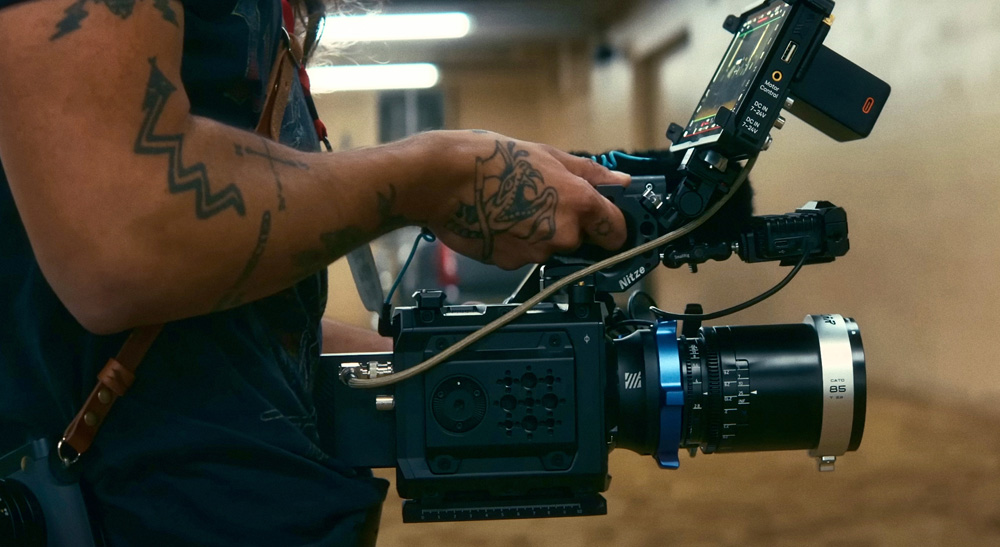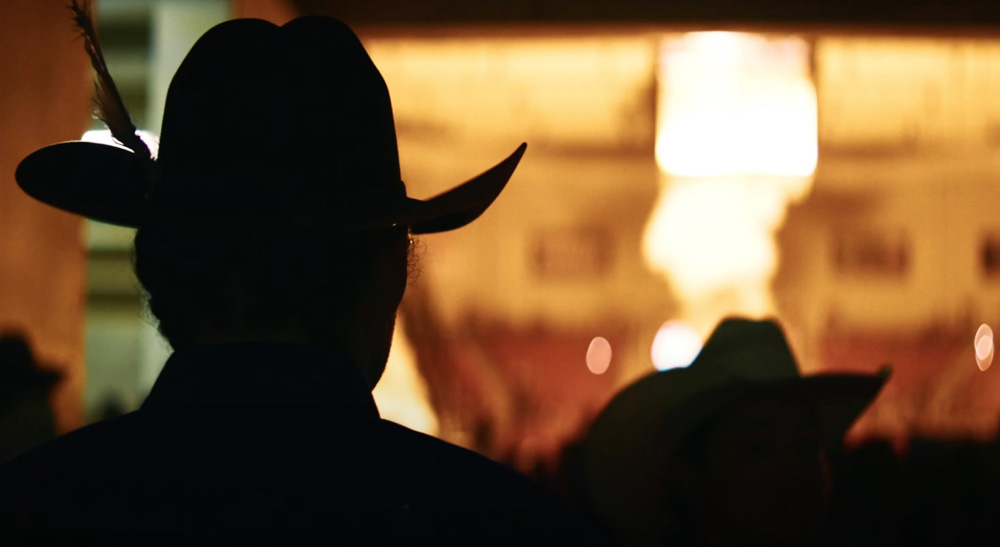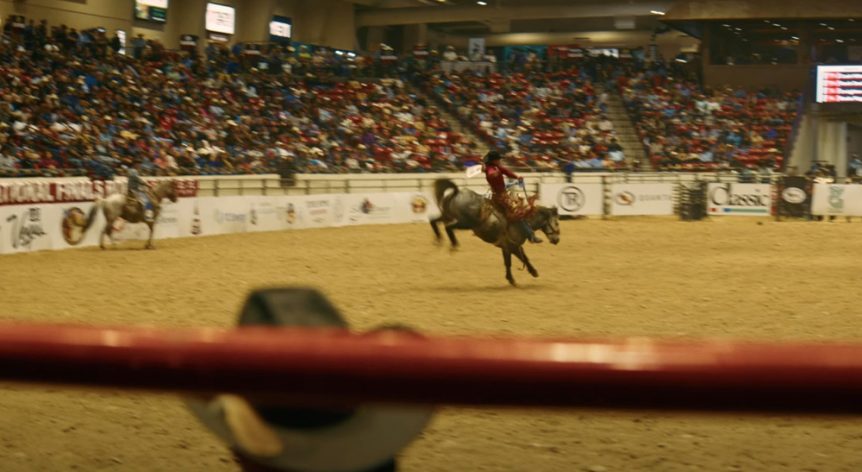Filmmaker Cameron Mackey relied on Blackmagic RAW and full frame sensor to capture high action.
Fremont, CA, USA - Filmmaker Cameron Mackey recently shot his short film “The Indian National Finals Rodeo - We’re Still Here” with the Blackmagic PYXIS 6K digital film camera, and color graded using DaVinci Resolve Studio editing, color grading, visual effects (VFX) and audio post production software.
Sanctioning nearly 700 rodeos nationwide and offering annual prize money exceeding over million dollars the Indian National Finals Rodeo is, by far, the largest and the oldest Indian Rodeo Organization in the world. Contestants compete for over $1,000,000 in prize money and awards throughout the year, which culminates with the Indian National Finals Rodeo, where more than 350 qualified contestants compete in the 8 major events. Mackey, known for telling unique stories with stunning visuals and a strong sense of action, documented the action at this year’s INFR event in Las Vegas, Nevada. He discussed his latest project, and why the PYXIS 6K was critical to his work.
Tell us how the project came about, and what your goals were in shooting the event.
Mackey: When it comes to shooting and directing mini docs on the indigenous community, the biggest battle is just getting the ball rolling, so a lot of the times I try to take advantage of last minute projects and events, not to mention how dense my schedule can be sometimes. The Indian National Finals Rodeo is one of the biggest events of the year for the equestrian side of the community. I went in with one goal in mind: highlighting why rodeo is so important to our community. I simply wanted to give a peak into a world that most people aren’t aware of, while documenting the heroes who have dedicated themselves to the lifestyle.
Why did you choose the PYXIS 6K for this project?
Mackey: There were two reasons I wanted to use the PYXIS 6K. The first major one was the internal Blackmagic RAW recording. When it comes to unplanned run and gun shoots like this, internal RAW takes away a lot of stress. From being able to perfect your white balance in post all the way to being able to underexpose my shots in camera with my custom internal preview LUT, knowing I’m going to have so much information to play with in post to finalize my image is critical. Blackmagic RAW really gives me everything I need.
The second reason I chose the PYXIS 6K was really the layout and balance of the camera. It really helps with creating that dense, grounded handheld feel without being overbearing.

What was the cinematic goal for the piece? Did you have a style you were hoping to achieve?
Mackey: One word: anamorphic. I feel a big part of the passion I have for anamorphic filmmaking is the painterly, gritty image I can create while documenting a way of life that has always brought me so much gratitude and peace. I want it to feel like a different world, because that’s what a lot of our people in the indigenous community experience. It can be a tough life but one filled with grace, poetry, and traditions. To me, anamorphic represents that true grit. I don’t want people to just watch a true to life representation of our community, I want them to be in awe, the same way I am with my culture.
How did you rig the PYXIS 6K?
Mackey: I try to keep my rigs really condensed and concise. I don’t like a bunch of addon parts and cables everywhere because when it comes to shooting western work, there’s a lot of physical movement you have to do. Between trying to not get trampled by bucking horses and bulls, to jumping over gates every five minutes, I have to be mobile.
I chose the Blazar Cato 2X anamorphics for my lens package because they are incredible on the PYXIS 6K. I pretty much strictly use them in the 6:5 sensor mode on the PYXIS 6K because it just makes monitoring on location easier, and it gives me my final traditional 2.35:1 crop. The wide focal lengths on the Catos have some heavy distortion on the far edges so the 6:5 mode once again helps crop some of that out, while still retaining the full vertical height of the sensor.
I’ve mainly used the PYXIS 6K as a handheld camera, but it’s always entertaining seeing people give me crazy looks when they see me burying the camera in sand, dirt, mud, or sometimes even cow patties. On these western shoots you learn to treat your camera as a tool and not just a pretty piece of technology. The PYXIS 6K is a workhorse and as long as I take care of it, it just seems to take it. My secret to getting immersive feeling western footage is getting as close as possible to the action. Obviously, I do not want to break the camera and ruin the shoot, but I'm willing to get it a little dirty to get the shot.

Did you find the PYXIS 6K easy to rig?
Mackey: The PYXIS 6K is incredibly easy to rig, but I was happy to find that the camera didn’t need a cage or need to be really built out to use. I was easily able to create a simple rig with old rigging parts laying around my workstation. I threw a nato rail on the top of the camera that had a rosette mount on the side. From there I was able to attach another nato rail so I could rig the follow focus to the other side. Then I just slapped on a top handle and rigged up my monitor. I bought a couple of the native BP-U batteries for the camera, and the two of them lasted for the whole day of shooting.
Can you talk about the color grade in DaVinci Resolve Studio using the Blackmagic RAW files?
Mackey: The PYXIS 6K footage was incredibly easy to grade. There was a lot of intense mixed lighting, but I had zero issues with correcting the Blackmagic RAW footage in post. There were even some shots that were mostly pitch black, with just a spot lit area, but I was able to recover a lot of the information in the low end, even though I could barely see it with my naked eye on set.
In post production, when it comes to run and gun, uncontrolled shoots like this, I like to really utilize Power Windows. It allows me to relight during the grade and push the look even further. Combine that with being very particular with how I position the talent or myself to get the best depth between composition, contrast, and color, I’m able to pull off some very high end looking results. The PYXIS 6K OLPF filter also really helps soften the image without killing the 6K resolution. You get all that punch but without that harsh digital look.

